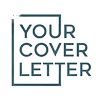In the highly competitive job market, crafting an exceptional cover letter is crucial to showcase your skills and experiences, make a strong first impression, and set yourself apart from other applicants. This is especially important in professions and applied sciences, where technical knowledge and industry-specific expertise are highly valued. In this article, we will discuss the essential components of a professions and applied sciences cover letter, common mistakes to avoid, and final steps to take before submission.
Understanding the Purpose of a Cover Letter
Before we dive into the essential components, let’s first understand the purpose of a cover letter. A cover letter is a one-page document that accompanies your resume and introduces you to the employer. It is an opportunity for you to showcase your personality, enthusiasm, and passion for the job. A well-crafted cover letter can help you stand out among the pool of applicants and increase your chances of getting an interview.
However, it’s important to note that a cover letter is not a duplicate of your resume. Instead, it should complement your resume by highlighting your relevant skills, experiences, and achievements. It should also demonstrate your understanding of the company’s mission and values.
Importance of a Tailored Cover Letter
One of the biggest mistakes applicants make is using a generic cover letter for multiple job applications. A tailored cover letter that showcases your alignment with the specific job requirements and company culture is much more effective. It shows the employer that you have taken the time to research the company and understand their needs.
When tailoring your cover letter, it’s important to use specific examples and keywords from the job description. This will show the employer that you have the necessary skills and experiences to excel in the role.
Showcasing your Skills and Experiences
The second purpose of a cover letter is to showcase your skills and experiences. Your cover letter should provide examples of how your skills and experiences align with the job requirements. It should not merely restate the content of your resume but rather expand on it by providing specific examples and anecdotes.
For example, if you’re applying for a marketing position, you could provide an example of a successful marketing campaign you led and the results it achieved. This will demonstrate your ability to think creatively and execute successful marketing strategies.
Making a Strong First Impression
Your cover letter is your chance to make a strong first impression. The introduction should be engaging and grab the attention of the employer. It should highlight your relevant experiences and achievements and provide a brief overview of your career aspirations.
However, it’s important to strike a balance between being engaging and professional. Avoid using overly casual language or humor, as this can come across as unprofessional. Instead, focus on showcasing your passion and enthusiasm for the job.
Remember, a well-crafted cover letter can make all the difference in landing an interview. Take the time to tailor your cover letter to the specific job and company, and showcase your relevant skills and experiences. With a strong cover letter, you can stand out among the competition and increase your chances of getting hired.
Essential Components of a Professions and Applied Sciences Cover Letter
Contact Information and Salutation
Begin your cover letter with your contact information, including your name, email address, and phone number. Use a professional font and format. After your contact information, write the date and the employer’s contact information, including their name, title, company name, and address. Begin your salutation using the employer’s name and title, such as “Dear Ms. Smith, Hiring Manager.”
It’s important to ensure that your contact information is up to date and accurate. This will make it easier for the employer to get in touch with you if they want to schedule an interview or follow up with any questions.
Introduction and Connection to the Job
Your introduction should immediately capture the employer’s attention and include a brief overview of your relevant qualifications. Mention the job you’re applying for and where you found the job posting. Next, provide a connection to the job by explaining why you’re interested in it. Show your enthusiasm and passion for the job.
One effective way to capture the employer’s attention is to start with a personal story that relates to the job. For example, if you’re applying for a job in environmental science, you could start by talking about your childhood experiences in nature and how they inspired you to pursue a career in the field.
Highlighting Relevant Skills and Experiences
Your cover letter should highlight specific examples of your skills and experiences that align with the job requirements. Use bullet points to organize your thoughts and make it easier for the employer to read. Provide anecdotes that demonstrate how your skills and experiences can benefit the company.
It’s important to tailor your cover letter to the specific job you’re applying for. This means carefully reading the job description and identifying the key skills and experiences that the employer is looking for. Then, you can highlight your own relevant qualifications in your cover letter.
Demonstrating Knowledge of the Company or Organization
Research the company and mention specific details that demonstrate your knowledge of the organization. This shows that you’re interested and invested in the company’s mission and values. For example, mention a recent news article or an industry-related award that the company received.
In addition to researching the company, you can also try to connect with current or former employees to learn more about the company culture and values. This will help you tailor your cover letter and demonstrate your fit with the company.
Closing Paragraph and Call to Action
Your closing paragraph should summarize your qualifications and reiterate your interest in the job. Thank the employer for their time and consideration and express your enthusiasm for the opportunity to interview for the position. Conclude your letter with a call to action, such as, “I look forward to hearing from you soon regarding an interview.”
It’s important to make the call to action clear and specific. For example, you could suggest a specific date and time for an interview, or ask if there are any additional materials you can provide to support your application.
Common Mistakes to Avoid
When it comes to writing cover letters, it’s important to avoid certain mistakes that can leave a negative impression on potential employers. Here are some common mistakes to watch out for:
Generic or Impersonal Cover Letters
One of the biggest mistakes you can make is to use a generic or impersonal cover letter. This can give the employer the impression that you didn’t take the time to tailor your application to the specific job requirements. It also shows a lack of interest in the job and can hurt your chances of getting an interview. Instead, take the time to research the company and the position you’re applying for, and use that information to craft a personalized cover letter that highlights your relevant skills and experience.
Focusing Too Much on Yourself
While it’s important to highlight your qualifications and experience, it’s equally important to focus on how you can benefit the employer. Avoid using too many “I” statements and instead focus on how your skills and experience can help the company achieve its goals. Use specific examples to demonstrate your value to the organization.
Overloading with Technical Jargon
If you’re applying for a technical position, it’s important to demonstrate your knowledge and expertise in the field. However, it’s also important to avoid overloading your cover letter with technical jargon. This can make it difficult for the employer to understand and may even come across as pretentious. Instead, use clear and concise language that demonstrates your technical knowledge without overwhelming the reader.
Typos and Grammatical Errors
Nothing undermines the credibility of your application faster than typos and grammatical errors. Even a single mistake can give the employer the impression that you’re careless or don’t take the application process seriously. Always proofread your cover letter multiple times and use a spell-checker to catch any errors you may have missed.
Being Overly Lengthy or Verbose
Finally, it’s important to keep your cover letter concise and to the point. While you want to highlight your qualifications and experience, you don’t want to overwhelm the reader with too much information. Keep your cover letter to one page if possible, and use bullet points and clear, concise language to convey your message effectively.
Final Steps Before Submission
Writing a cover letter can be a daunting task, but with these final steps, you can ensure that your cover letter is polished and professional.
Proofreading and Editing
Proofreading and editing your cover letter is crucial to ensure that it’s error-free. You don’t want to submit a cover letter with typos or grammatical errors that could make you appear careless or unprofessional. Take the time to read your cover letter multiple times, and consider using a spell-checker and grammar-checker to catch any mistakes.
It can also be helpful to have someone else read your cover letter. A fresh pair of eyes can often catch mistakes that you might have missed. Consider asking a friend or family member to review your cover letter, or even better, seek feedback from a mentor or career counselor.
Seeking Feedback from Peers or Mentors
Getting feedback from your peers or mentors can be invaluable in ensuring that your cover letter effectively showcases your skills and experiences. They can provide constructive criticism and suggestions for improvement that can help you stand out from other applicants.
When seeking feedback, be open to constructive criticism and consider their suggestions carefully. Remember that the goal is to improve your cover letter and make it the best it can be.
Tailoring the Cover Letter for Each Application
Tailoring your cover letter for each job application is essential to demonstrate your qualifications and interest in the specific job requirements. This means that you should avoid using a generic cover letter for all job applications.
Take the time to read the job description carefully and identify the key skills and experiences that the employer is looking for. Use these keywords and phrases to align your cover letter with the job requirements and demonstrate how you are a good fit for the position.
Ensuring Proper Formatting and File Type
Ensuring that your cover letter is properly formatted and the file type is compatible with the employer’s software is important to make a good impression. If your cover letter is difficult to read or the formatting is inconsistent, it could make you appear unprofessional.
Consider using a standard font and formatting your cover letter in a clear and concise manner. It’s also a good idea to save your cover letter as a PDF to ensure that the formatting remains consistent across different devices and software.
Following Up After Submission
Following up with the employer after you submit your cover letter and resume is a great way to show your continued interest in the job and stand out from other applicants. It’s important to do this in a polite and professional manner.
You can send a brief email inquiring about the status of your application and expressing your continued interest in the job. This can help keep you top of mind for the employer and demonstrate your enthusiasm for the position.
By following these final steps, you can ensure that your cover letter is polished, professional, and tailored to the job you’re applying for. Good luck!
Conclusion
A well-crafted professions and applied sciences cover letter can make a significant difference in getting an interview for your desired job. Follow the essential components outlined in this article, avoid common mistakes, and take the final steps to ensure that your cover letter stands out among other applicants. Good luck on your job search!

